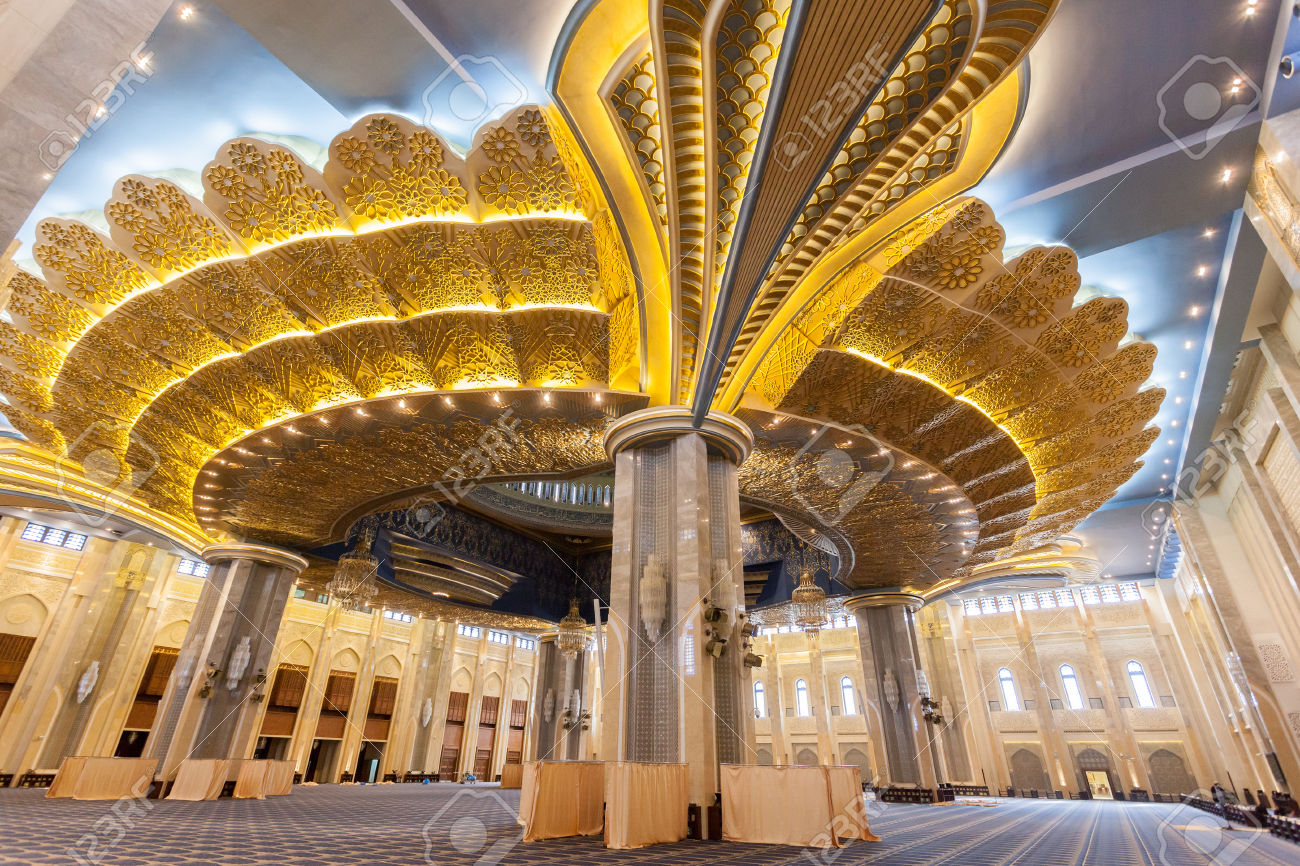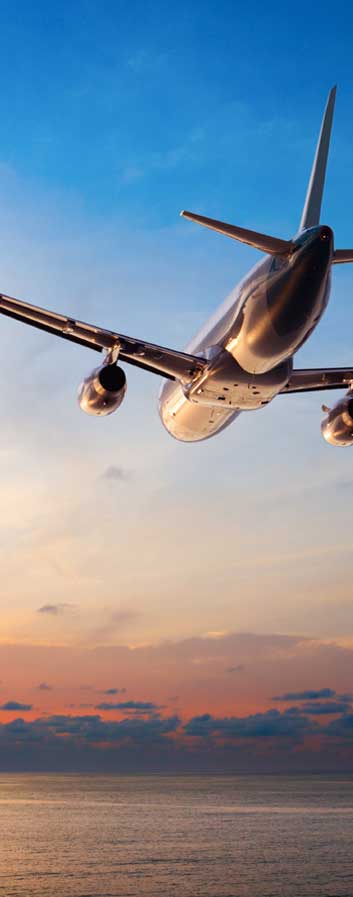Grand Mosque
Located in the heart of the city, the Grand Mosque is the biggest and the official Mosque of Kuwait which means that official religious celebrations are held in this mosque only. Locals refer to it as Al-Masjid Al-Kabir with total area of 46,000 square meters (490,000 sq ft), in that the building itself covers 20,000 square meters (220,000 sq ft). The Grand mosque is internationally renowned for its Islamic architecture and it has become one of Kuwait's most treasured landmarks. Indeed, the builders and designers have put a lot of effort in creating this mosque starting the project way back in 1979 and finally completing it seven years later in 1986 at a cost of about KD 14 million. Grand Mosque is popular for its prayer arrangement during the last 10 days of Ramadan. Thousands of Muslims gather during last 10 days of Ramadan.
Situated opposite the Stock Exchange and Al Seif Palace, this beige tinted mosque does not seem to be as magnificent from the outside as it does from the inside, although the building spans 20,000 square meters. Visitors and tourists can visit the mosque every week day morning at 9.00am and can have a guided tour free of charge. This is well worth doing as tourists will find out many facts and figures about the building as well as about the Islamic way of life as well as they can ask lots of questions. Tourists may also borrow head scarf and an abaya if they do not have one and long loose clothing is also recommended. The color scheme is blue and beige- taken from the colors of the surroundings, which is very pleasant and soothing to the eye (particularly for those night prayers).
The main prayer hall is in fact the largest hall with 4 columns and with its floor space it can house nearly 10,000 men. It is elegant with natural light creeping in and also magnificent chandeliers hanging from the roof (each weighing the same as a car). Construction was completed in 1986; the number of worshippers has been rising each year with nearly 2 lakh men and women praying together one night during Ramadan in 2011. The multi level car park was altered into prayer halls, to provide accommodation for this number, made spotlessly clean, carpeted and air conditioned for this reason.
The Grand Mosque is an excellent example of the conventional Islamic architectural style and also borrowed heavily from Persian structural design especially things like a central large dome, pointed arches and arcades of pillars forming into windy open-air passageways. Upon entering the mosque, the visitors are struck by the magnificence of gold leaf and saturated blues. The gypsum which is Hand-carved adds textures to the mosque, inestimable geometric Andalusian style patterned tile work brighten the space and ornamental calligraphy lures the eye of visitors around the room.
The main prayer hall located at the heart of the mosque is 70 meters (236 ft) wide on all sides and has lighting provided by 144 windows with 21 teakwood doors. The chief prayer hall is exclusively used by male worshippers and can hold up to ten thousand men. The mosque is built with a separate praying area for women which is smaller than the main hall and can only accommodate one thousand female worshippers. The patio is also open for devout Muslims, particularly for those who want peaceful environment. The room is square shaped as worship always faces towards Mecca; the square design allows the building to be oriented as such.
The dome of the mosque is 43 meters (141 ft) high and 26 meters (85 ft) in diameter. Four majestic chandeliers are suspended from its dome which is surmounted with a crescent of copper. Careful attention is given to the detailing of the Kuwait Grand Mosque, as seen on its dome and it is decorated with the Asma al-hosna, the 99 names of God, as revealed in Quran. Visitors can see the words blending into geometric patterns as they circle around the dome at the Grand Mosque. These were written and designed by Hamid Haddad who is one of the most important calligraphers in Middle East.
This Mosque can house up to 10,000 men in the main prayer hall and up to 1000 women in the separate hall for women. The mosque also contains a library of 350 square meters (3,800 sq ft) with Islamic reference books and documents.
Underneath the eastern courtyard, there is a 5-level car parking which can hold up to 600 cars which can also used as prayer area to accommodate the sudden influx of more worshippers particularly during Ramadan. The mosque's minaret which is sited at the northwest corner resembles Andalusian architecture. Visitors can observe that the decorative elements in the space don’t include images of animals, plants, people, Mohammed, or God. This is because it is believed that trying to characterize God’s creations in art can never really be as good as the actual thing and it is sac-religious to attempt and portray what God might look like. Star designs are preferred as they can be considerably drawn out into as many different patterns as the artist would like.
The mosque has ten gates made of rare wood. The Qiblah, the direction to which Muslims turn in prayer, is decked out with a verse from the Holy Qur'an printed in Kufi calligraphy. The colors and its outstanding calligraphy are designed in such a way to strengthen one's faith of God. The Mosque’s geometric architectural style bears a resemblance to the local characteristics of the desert and the Gulf. The authorities have strained their nerves in selecting the artists, fonts (some fonts are kept back for royal or religious purposes) and words.
The Amir's room which is the capstone of the Grand Mosque is certainly not to be missed. This room leads on from the main prayer hall and is used twice a year by the Amir and his guests. The room has been designed brilliantly with symmetrical lines on the ceiling and walls. The hand-carved gypsum ceilings are the most remarkable part of the Amir room.



































